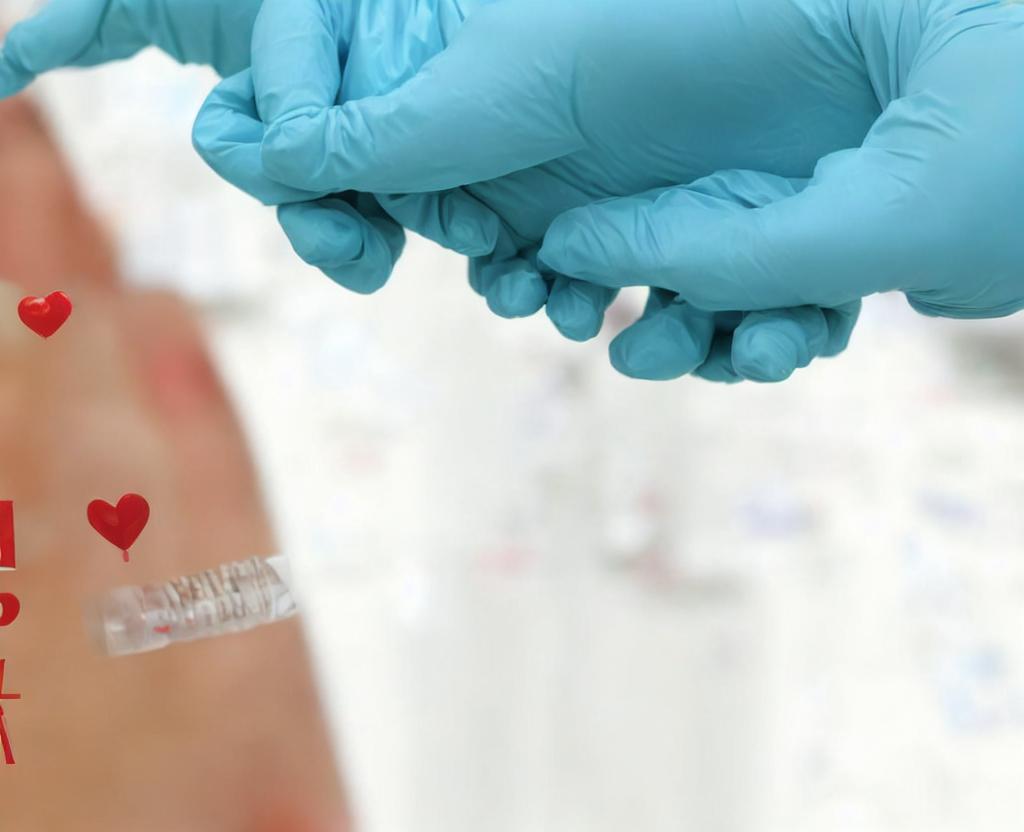
National Hiv Vaccine Awareness Day
Each year, National HIV Vaccine Awareness Day (NIV) honors thousands of volunteers, community members, physicians, and scientists who work together to find a safe and effective HIV vaccine.
#hivvaccineawarenessday
Over 30 years have passed since HIV was first identified as the cause of AIDS. Nevertheless, researchers are still on their quest to find a vaccine. Many people affected by HIV and AIDS need treatments and preventative steps to assist those affected by HIV and AIDS. Nevertheless, a safe vaccine is still the only way to reduce its spread. Today, we must continue to spread the word to raise concerns and education about HIV vaccine research.
Nearly 1 out of 7 people are living with HIV today. About 1 in every 7 people are living with HIV. That means nearly 37.9 million people around the world are living with HIV/AIDS. In addition, the virus appears to be most prevalent in the world's poorest and most marginalized populations.. HIV infection is spread by a lack of educational knowledge, preventative steps, and medical therapy. Most importantly, the leading causes of HIV transmission are education, preventative steps, and medical therapy.
Several diseases that are caused by bacteria and viruses are also caused by vaccines. Unfortunately, there is no cure for those infected by HIV. Scientists are already researching how to create an effective therapy. Multiple companies are collaborating to find a safe treatment. Clinical trials and experiments are still being carried out around the world in the hopes of fighting the virus.
The HIV virus was considered a global pandemic by the National Institute of Allergy and Infectious Diseases. The company's pledge to provide prevention services to diverse populations around the world is generating progress, but more work remains to be done.
Prevention, assistance, and education are all important aspects of prevention, guidance, and education.
- Get tested
- Support someone with HIV/AIDS
- Hold a fundraiser
- Encourage treatment
- Listen in as someone living with HIV/AIDS. AIDS is a disease that affects people living in the United States
- fected individuals. Donate to a local charity that supports people with the virus
- Please support #HIVVaccineAwarenessDay and #HVAD on Twitter to spread love
History of national hiv vaccine awareness day has spanned the country's national hiv vaccine awareness day
This day is also a day to remind our communities about the importance of preventive HIV vaccine research. In honor of the observance, community activities and media performances are being organized around the country.
- e Center and Disease Control (CDC) and Prevention Morbidity and Mortality Weekly Reports, 1981: The first published study on HIV/AIDS appears in the Center and Disease Control (CDC) and Prevention Morbidity and Mortality Weekly Report
- e (AIDS), according to the CDC, the virus is associated with acquired immunodeficiency syndrome (AIDS)
- 1984: The CDC reports that the HIV/AIDS virus is responsible for the HIV/AIDS virus
- The CDC develops a test to help identify HIV/AIDS in 1985
- The CDC's 1987: The CDC begins treating azidothymidine (AZT), also known as d zidovudine
- Two new antiretroviral drugs are introduced and tested in the body in 1990, reducing the amount of virus present in the body
- 2000: The International AIDS Conference in Durban, South Africa, is held in Durban, South Africa
- 2001: The CDC has announced that they have developed a new strategic plan to combat HIV/AIDS' spread
- In 2003: An initiative was launched to reduce the number of infected HIV/AIDS diagnoses to less than 3 million people
- Timothy, a Berliner patient with the first case of HIV cure for a Berlin patient
- Early intervention to reduce HIV in 2011: results of the HIV Prevention Trials Network (HPTN052) early intervention to reduce HIV
- HIV/AIDS in 2013 has been reduced by 30% by 30%. AIDS is also reduced by 30% in 2013
- HIV/AIDS diagnosis decreased by 19% between 2005 and 2014, according to the CDC, with a 19% decline in HIV/AIDS diagnoses between 2005 and 2014
- 2019: Bone marrow research shows that HIV/AIDS treatment is improving in the treatment of HIV/AIDS





